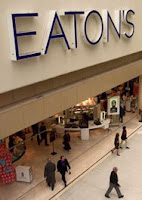 The “wow” factor can have huge emotive power and can have immense brand influence. It’s the head turning visual or the sound that stops you in your tracks. It’s intensely impactful and memorable.
The “wow” factor can have huge emotive power and can have immense brand influence. It’s the head turning visual or the sound that stops you in your tracks. It’s intensely impactful and memorable.A “wow” brand gets noticed for its desirability and its aesthetic value. I am not talking about sensationalism like United Colors of Benetton controversial advertising campaigns of the past. I am talking about the ability of transfixing your desire to want for the sake of wanting. The “wow” brand propels you to want to be a part of something unique and admirable.
The “wow” factor can be created by the product, the front-line customer interaction the product adverting, and public relations. The most successful “wow” comes from all these interactions and touch points to build the brand experience.
Apple’s iPod is an example of the “wow” factor. The white wires that hang from customers ears
 say it all. There were other mp3 players that were better and cheaper but didn’t have the “wow” factor. All the brand elements worked together to build the “wow.’ Even when you plugged it in and placed the earphones into your ear lobe the word “wow” rung in your head. The “wow” reflects the product sleek design, the product packing and the memorable advertising. When the iPod was launched in 2001 the media described it as “sexy new gadget” and “eye-catching industrial design.”
say it all. There were other mp3 players that were better and cheaper but didn’t have the “wow” factor. All the brand elements worked together to build the “wow.’ Even when you plugged it in and placed the earphones into your ear lobe the word “wow” rung in your head. The “wow” reflects the product sleek design, the product packing and the memorable advertising. When the iPod was launched in 2001 the media described it as “sexy new gadget” and “eye-catching industrial design.”A great number of products miss the importance of the “wow” and how powerful it can be to move the masses emotionally and physically. The advertising is only the final piece to the puzzle. If you think the advertising is going to create the “wow”, think again. So many brands have died on fantastic creative. As the old saying goes “advertising can get the customer to the door but can’t make them buy.’
 The T. Eaton Company of over 90 department stores across Canada is a sad example of trying to reengineer a formidable brand that began in 1867 and became a cornerstone of the country’s cultural landscape. The company began a $100 million store renovation program after numerous years of bad marketing decisions and aggressive competition. During this time they ran an expensive advertising campaign targeted to teenagers and young adults. The theme was “Diversity” and focused with the imagery of “urban punk.’ They all ran high fashion advertising targeted to wealth buyers. In essence, the company advertised its new brand before it fixed up the old stores; so when people walked into the store they didn’t see what the ads portrayed. In 2002 the company closed it doors forever.
The T. Eaton Company of over 90 department stores across Canada is a sad example of trying to reengineer a formidable brand that began in 1867 and became a cornerstone of the country’s cultural landscape. The company began a $100 million store renovation program after numerous years of bad marketing decisions and aggressive competition. During this time they ran an expensive advertising campaign targeted to teenagers and young adults. The theme was “Diversity” and focused with the imagery of “urban punk.’ They all ran high fashion advertising targeted to wealth buyers. In essence, the company advertised its new brand before it fixed up the old stores; so when people walked into the store they didn’t see what the ads portrayed. In 2002 the company closed it doors forever.The “wow” factor is the glue that creates the emotional connection. It creates the buzz and makes the product relevant. When executed properly, it can create a life-long connection – remember the Macintosh personal computer 1984 TV commercial that ran only once!
Ultimately, emotional connection will come from positive shared experiences with the brand over time.
Published in 1999, Rolf Jensen’s book, The Dream Society, explores the concept of the commercialization of emotions. Jensen says that it will no longer be enough to produce a useful product. He shows that, to be successful, the primary purpose of a product will be its ability to fulfill an emotional need. Those marketers who understand the workings of the dream society will be the ones who create the new products, new markets and new businesses that dominate the world of tomorrow. In this book, Jensen identifies six emerging emotion-based markets:
• Adventure
• Community (togetherness, friendship and love)
• Providing and receiving care
• Self-expression (“Who-Am-I?”)
• Peace of mind
• Standing for something (convictions)
These could be the bases for your “wow” factored brand.

